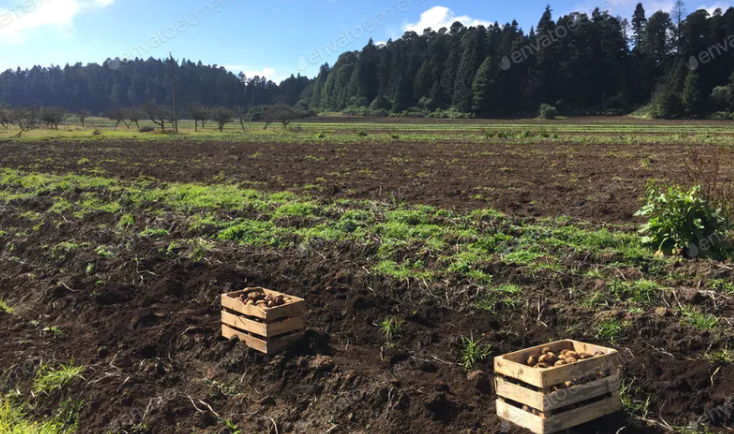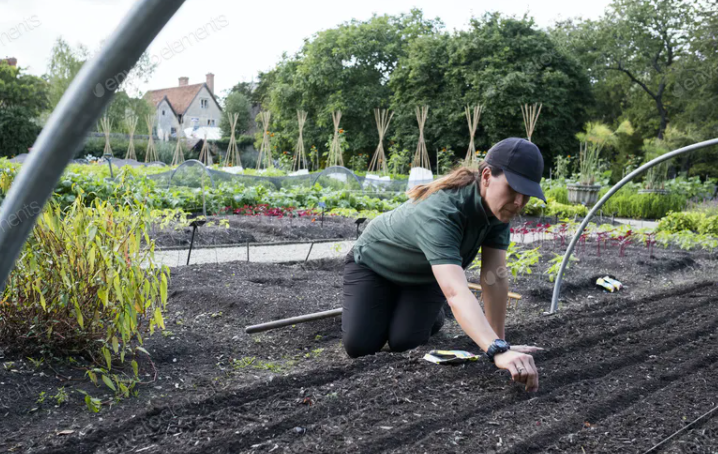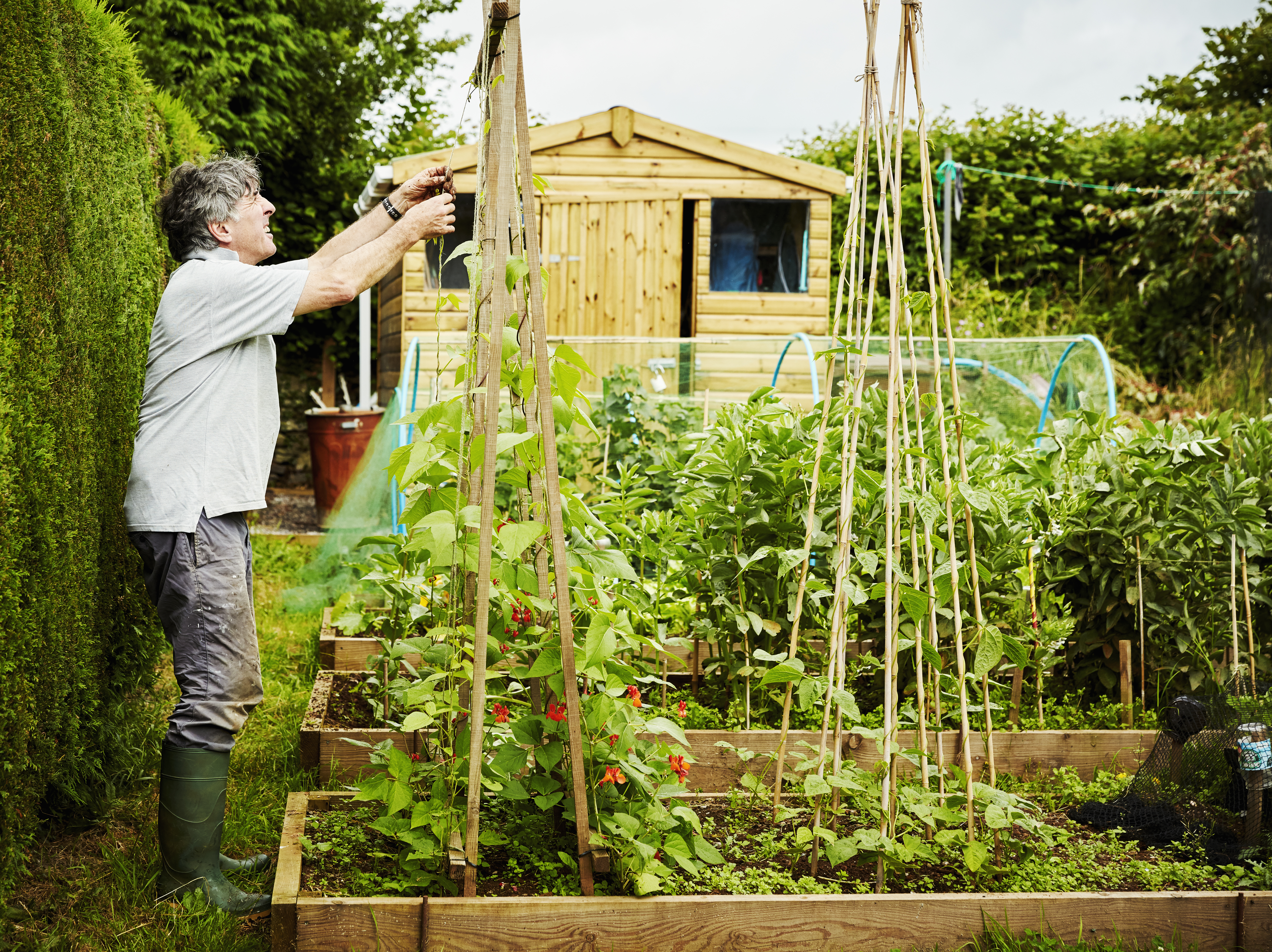Are you that type of gardener who is conscious of how you can contribute to conserving our environment’s resources? If that is you, this article is a fit for you! Here, we will discuss principles of organic agriculture. Perhaps, some of the information you will get in this article will be applicable in your home garden! So buckle up and let us start.
What is Organic Agriculture?

Organic agriculture is said to have originated in the early 20th century mainly in England, also in the United States. It was a movement pioneered by people who were motivated to solve the frequent problems of agriculture. Some of these are erosion, low-quality food, and rural poverty. Having the belief that agriculture depends on soil vitality, it’s being embodied in soil organism. And, the organic soil portion called humus.
The humus farmers would avoid or use sparingly synthetic fertilizers. They felt that these chemicals caused imbalanced nutrition and “luxury consumption” in plants leading to reduced food quality. They believed that these chemicals were dangerous to themselves and harmful to the soil biology. Humus farming was then considered a “conscious, well-founded approach to farming and soil management”. “Humus farming” was eventually replaced by the term “organic” in the 1940s [1].
Moreover, organic agriculture is a system wherein production is more involved with ecosystems rather than external input. It is a system that is more conscious of its environmental and social impact, hence it eliminates the use of synthetic chemicals and instead incorporates alternative management practices to fertilize the soil and control pests and diseases [2].
Principles of Organic Agriculture
Organic agriculture has four principles [3], namely health, ecology, fairness, and care. These principles contextualize the purpose and contribution of organic agriculture to humankind.
Principle of Health
The principle of health states that “organic agriculture should sustain and enhance the health of soil, plant, animal, human and planet as one and indivisible”. This means that the health of human beings is inseparable from the health of ecosystems. It should be mandatory to nourish everything from the soil organisms to the human beings by avoiding harmful synthetic chemical inputs and producing high-quality, nutritious food.
Principle of Ecology
The principle of ecology states that “organic agriculture should be based on living ecological systems and cycles, work, emulate and sustain them”. This means the system of production should incorporate the natural ecological processes and recycling of energy and nutrients. It also means that farming systems should be designed in such a way to maintain balance in the environment.
Principle of Fairness
The principle of fairness states that “organic agriculture should build on relationships that ensure fairness concerning the common environment and life opportunities.” This means not only should stewards promote equality in relationships between humans such as farmers, workers, and traders, as well as future generations.
Principle of Care
The principle of care states that “organic agriculture should be managed in a precautionary and responsible manner.” This is to protect the health and well-being of current and future generations and the environment. This means practitioners should not risk jeopardizing health and well-being by using unpredictable technologies.
Applications and Practices in Organic Agriculture
The broad definition of organic agriculture makes it a complex of many different farming practices, as long as they are not incorporating synthetic inputs. A few examples of which are crop rotation, green manuring, composting, and biological pest control [4].

Crop rotation refers to the technique of sequentially growing various crops of different seasons in the same area. It is common, for example, to plant legumes such as mungbean after harvesting an annual crop such as corn to resupply the removed soil nitrogen through nitrogen fixation which eliminates the use of nitrogen fertilizers.
Green manuring refers to the technique of uprooting and burying the unused plant parts post-harvest to recycle nutrients back into the soil. Composting works similarly, except that organic matter is allowed to decompose first in a pit outside the planting area before being incorporated back into the soil.

Biological pest control refers to the technique of using living organisms instead of pesticides to control populations of pests. These can be the pests’ natural predators or parasites and parasitoids as well as pathogens.
All of these techniques utilize natural biological processes instead of synthetic inputs to fertilize the crops and control pests.
Advantages and Disadvantages of Organic Agriculture
There are many advantages associated with the practice of organic agriculture, albeit there are some disadvantages as well. The following information below is based on a position paper published by the Food and Agriculture Organization of the United Nations [5]:
Organically-grown products can be sold at premium prices, often 20% higher than non-organic identical products. There is a market opportunity for products of organic agriculture to be exported, particularly from developing countries. Though some consumers do have a preference for locally-grown organics, the demand for various foods all year round inevitably creates a need for a country to source organics from the outside.
Some Challenges to Conquer
The challenge, however, is that it is difficult to enter these markets considering the issue of certification. Farmers who start implementing organic management would have to wait two to three years before being allowed into organic markets. This is done to purge chemical residues from their farms before calling their products organic. Products organically managed for at least one year can be sold as “transitional organic”, but few markets cater to these. Additionally, certification services can be expensive, and farmers have to worry about hiring credible inspectors. There might as well be a lack of studies concerning market information as well as the ultimate profitability of these organic products. Despite that, these may still potentially help with food security in families by increasing their income.
With regards to farm productivity, the transition of farms into organic agriculture may have an initial negative effect on yield. In a period between the removal of synthetic inputs and the restoration of natural biological processes such as nitrogen fixation, there are usually problems arising with pest control and fertility. The degree of loss in yield will depend on factors such as the farm’s inherent biological attributes and the extent of previous synthetic input. This means that low-fertility farms with disrupted biological activities may take years to convert into organic farms.
Another hindrance to the transitioning of farms into organic production is the lack of knowledge, which discourages farmers from adopting the practice. There is inadequate training among extension personnel, and there is a lack of professional institutions in developing countries to assist farmers in organic production. Considering land tenure, farmers may also refuse to adopt the practice if they are not the owners of their land.
But, there is a bright side!
These issues may be discouraging, but there are awesome benefits! The diversification of organic crops with different planting and harvesting schedules may evenly distribute labor demand, possibly leading to employment stability. That same diversification can also provide different income sources as well as vitamins and minerals for the nutrition of families. The risk of failure can be spread over a wide range of crops, and despite some yield loss, the overall yield can still compete with that of conventional farms due to its high market price and also sometimes its lower input costs.
Organic Agriculture and Sustainability
As for sustainability, it is the purpose of organic agriculture to contribute to sustainability, although organic agriculture alone has some negative impacts and should not be an exclusive farming method. Nevertheless, it has a multitude of benefits given the fact that organic agriculture encompasses many environmentally-friendly farming practices geared towards soil and water conservation.

For example, crop rotation, organic manure, and mulch improve soil structure and encourage soil microorganism populations, whereas mixed and relay cropping cover the soil and minimize erosive forces from the rain. Since organic agriculture relies more on natural pest control methods such as pest predators and insect-repelling plants instead of synthetic pesticides, the detrimental effects of the latter are minimized if not removed completely. This means that beneficial organisms will not be killed by misused chemicals, pest resistance will not result, bodies of water will not be polluted, people’s health will not be compromised, and nonrenewable resources will not be spent.
Organic agriculture recycles the fertility found in crop residues such as straws, stovers, and other non-edible parts into compost, mulch, or livestock manure; additionally, it implements natural fertilization by involving nitrogen-fixing legumes in its cropping systems. As a result, there is less need for nitrogen fertilizers which can contaminate water and destroy ecosystems. Organic agriculture also contributes to the conservation of genetic resources because it can incorporate a wide variety of crops and under-utilized plants as well as livestock or forestry systems which optimize natural interactions, preserve biodiversity, and ultimately contribute to sustainability.
Are you ready to practice some of these principles in your home garden?
If you are looking to start your garden, check out the links in the description for our recommended books and audiobooks.
Don’t forget to download the free ebook too.
Backyard Gardening Book (paperback)
Backyard Gardening Book (audiobook)
Urban Gardening Book (paperback)
Urban Gardening Book (audiobook)
TOP 10 ESSENTIAL TOOLS THAT A BEGINNER GARDENER NEEDS
GARDENING FOR BEGINNERS GUIDE [14 TIPS TO BE SUCCESSFUL]
References
[1] Kuepper, G. (2010). A brief overview of the history and philosophy of organic agriculture. Kerr Center for Sustainable Agriculture.
[2] FAO. (n.d.). What is organic agriculture?. Retrieved from http://www.fao.org/organicag/oa-faq/oa-faq1/en/
[3] IFOAM Organics International. (n.d.). Principles of organic agriculture preamble. Retrieved from https://www.ifoam.bio/sites/default/files/poa_english_web.pdf
[4] Agriculture Goods. (2019, November 3). Guide to organic farming methods. Retrieved from https://agriculturegoods.com/guide-to-organic-farming-methods/
[5] FAO. (1999, January 29). Organic Agriculture. Retrieved from http://www.fao.org/3/X0075e/X0075e.htm

